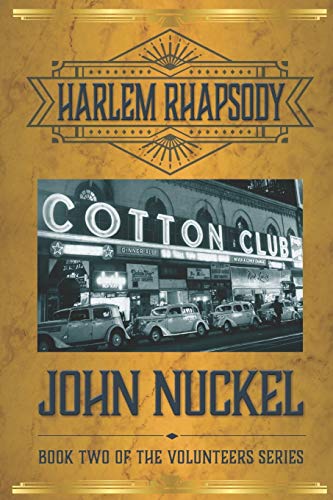Harlem Rhapsody: A Crime Thriller
This second book in the Volunteers series begins when an imprisoned Irish patriot is brought to New York City in 1925, renamed Joe Doyle, and given leadership of the Volunteers. The group is a remnant of Roosevelt’s Rough Riders, now backed by capitalist giant Jack Morgan, and determined to root out corruption in New York.
Two years later, Charles Merritt, a sax player, Columbia student, and survivor of the Harlem Hellfighters, is recruited by the Volunteers to infiltrate the Cotton Club, a speakeasy run by gangster Owney Madden. Charles’s job is to report information that the gorgeous Belle Turner, the “Belle of Broadway,” teases out of patrons. Doyle uses these tips ostensibly to bust the corrupt officials of Tammany Hall, but the whole Volunteers concept peters out by the halfway point without it ever having been very clear who they are, what they do, and if they succeeded. The book’s second half turns to mobster pulp fiction as Madden sets out to take down rival kingpin Arnold Rothstein.
Motive, plot, and character arc aren’t the novel’s focus; it shines in its affection for hard-boiled gangster patter, its relish for the wealth as well as violence of the criminal underworld, and a deep reverence for the Harlem Renaissance and the talent that crossed the Cotton Club stage. While the book doesn’t avoid the now-offensive racial epithets of the period, it soft-pedals the Cotton Club’s racist bent: only whites were patrons, while talented black performers were expected to produce a “jungle music” aesthetic. If readers are prepared to accept this, and can root for a stylish felon of a protagonist whose accomplishments are murder, beating women, and violation of the Volstead Act, Harlem Rhapsody is a smooth, fast, entertaining read.










